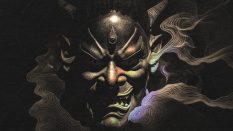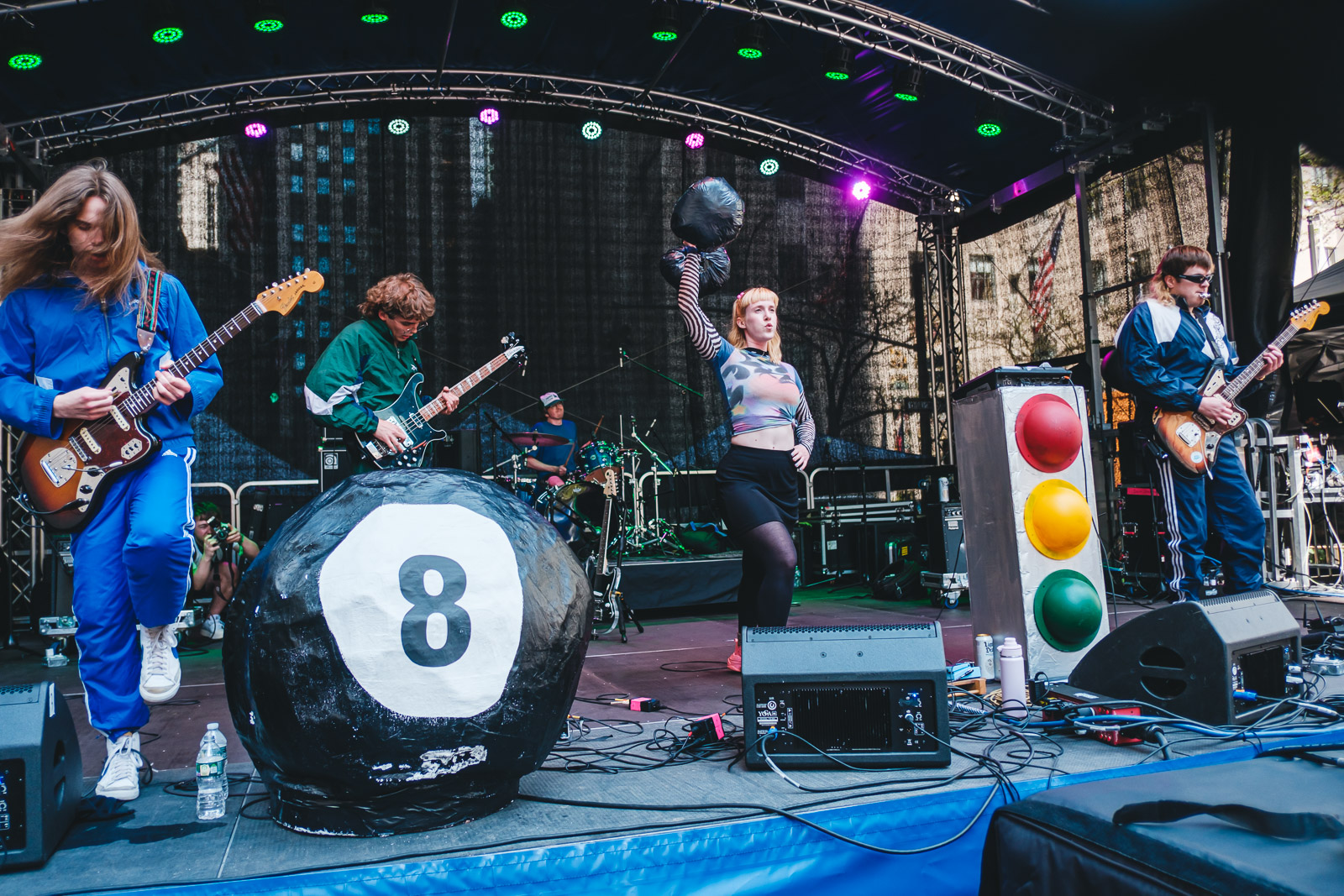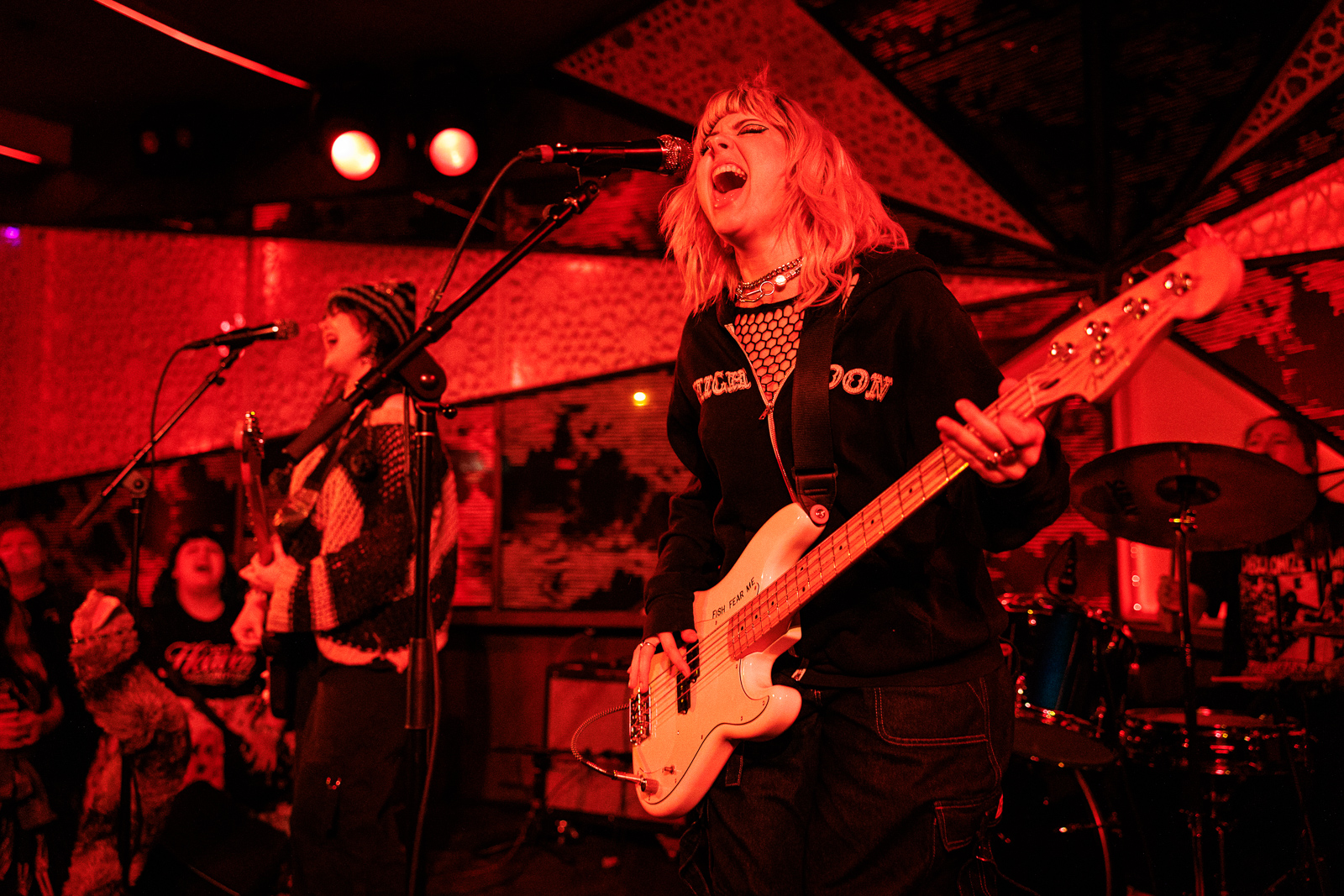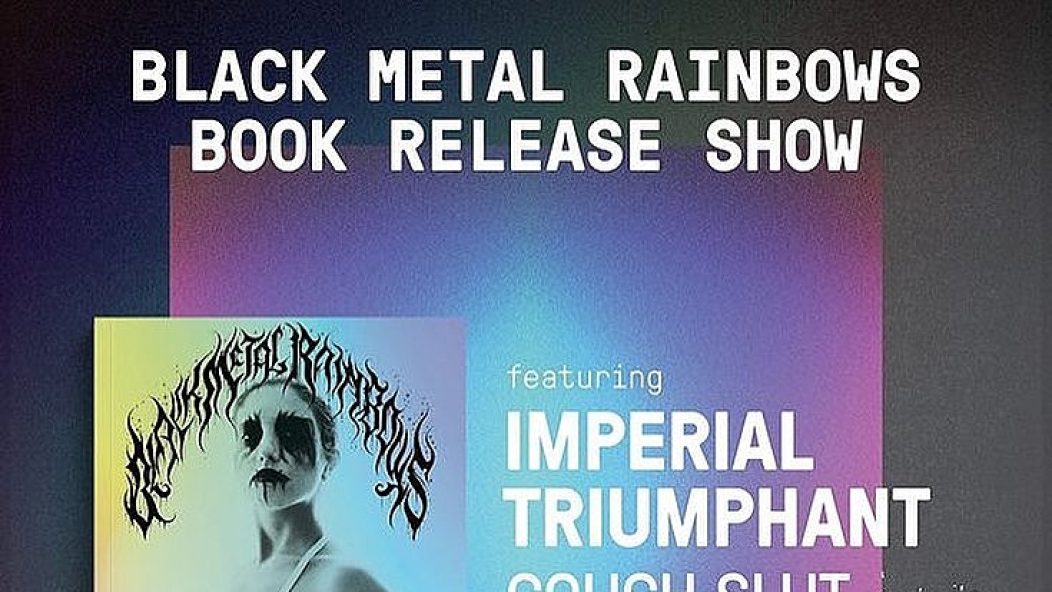
Black Metal Rainbows' Release Show at Saint Vitus Bar United a Passionate Scene (Live Report)
It wasn’t called toxic masculinity back then, but it was sort of toxic masculinity in contemporary literature,” Daniel Lukes, one of the editors of Black Metal Rainbows, told me while we were standing in front of St. Vitus for the book’s release party. A light, stinging rain was sprinkling the sidewalk and we were sheltered under the awning of the wine store next to the venue. Lukes’ solo publications include a collection of critical studies of the American writer William T. Vollmann and Triptych: Three Studies of Manic Street Preachers’ The Holy Bible (an album by a Welsh band). Lukes and his co-editor Stanimir Panayotov put together a book with essays on race, gender, sexuality and other cultural politics, including spirituality from both the New Age and traditional institutions, that used black metal as the vehicle for each discussion.
Black Metal Rainbows, a new book out on PM Press [read our interview here] is a series of paracademic articles intended to be as accessible as it is thorough. The collection has essays from long time writers in the metal and other underground scenes like Margaret Killjoy, Kim Kelly, and Ravenna (Liturgy) and was edited by Daniel Lukes and Stanimir Panayotov. Both editors have backgrounds in music journalism, comparative literature and doctor degrees in literature and have worked together on other books such as Y’all Means All. Stanimir Panayotov is originally from Bulgaria and teaches at the English language school Tyumen College in Siberia, Russia. His work sits at the intersection between continental philosophy, feminist theory and non-philosophy. His other work has been included in Heathen Harvest, Metal Music Studies, the Minnesota Review, Aspasia, and more. He is also the editorial manager of Identities: Journal for Politics, Gender and Culture.
Lukes holds a PhD in comparative literature where he compares pop culture with subcultural materials like metal and industrial. With so much of their work following the leftist tradition of critically analyzing work traditionally removed from academia, it seems inevitable that they would view black metal as a text.
…
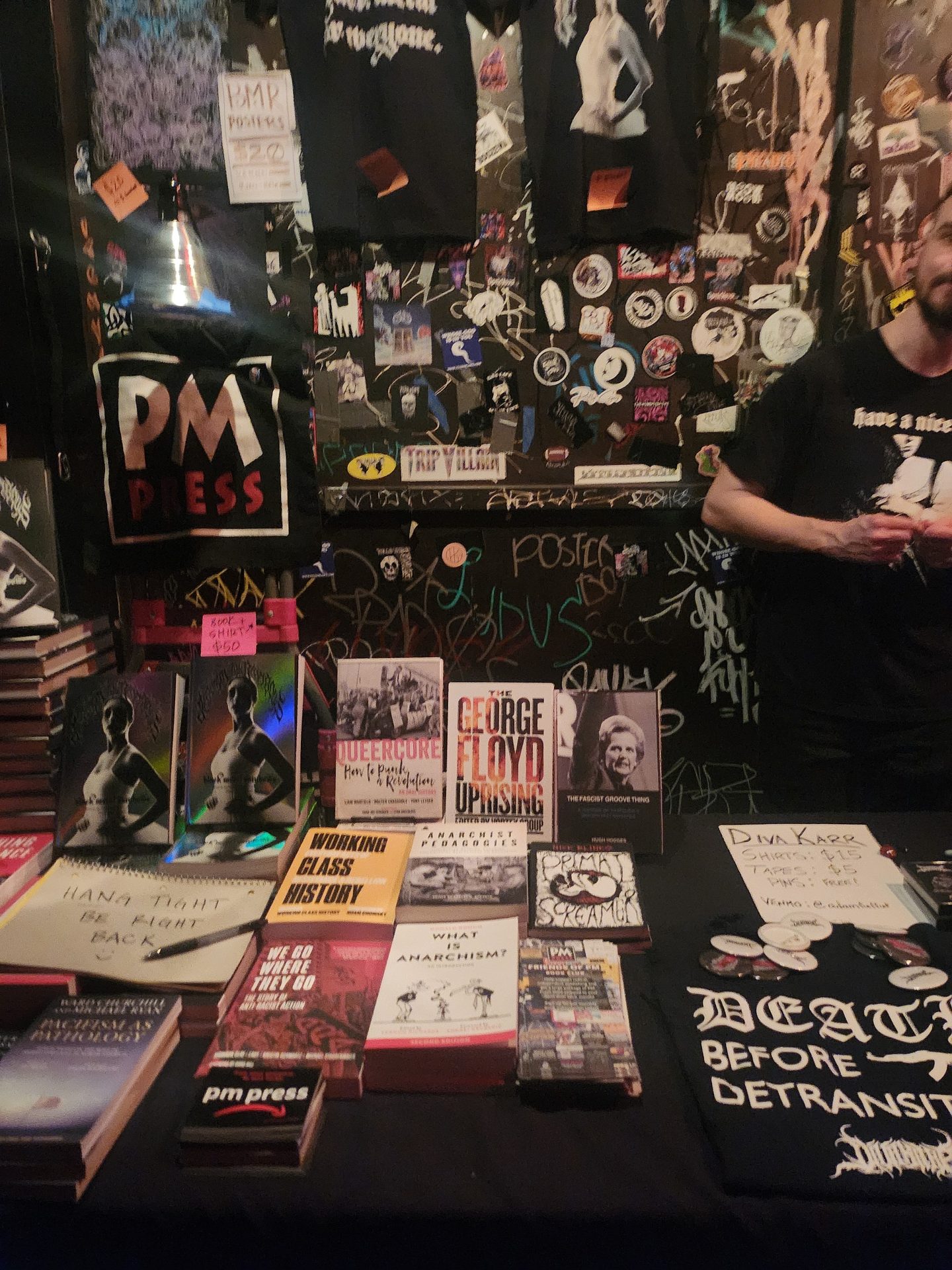
…
That made the show at St. Vitus a point for theory to meet praxis, and the show had a home-cooked feel that comes from seeing many familiar faces. The acts, including Imperial Triumphant, Couch Slut, and more, were pulled from the tri-state area where years of going to shows at nearby venues have stewed together a specific vibe, full of all the parts from the past twenty years. This organic mashup came from Jaci Raia, the graphic designer and layout editor for the book.
“We booked the show here because I used to live in Brooklyn,” she explained. “When we were talking about booking a show of course I said I wanted to do it at my home base– I want to do it at St. Vitus. I’ve been going here since it opened. When it came time to book the show it just made sense to bring it back here.”
Jaci was the contact between the theory of the book and musicians who wrote the material it drew from. When she was booking the show she looked for artists who would compliment the theme of the book and make a clearer connection between the book’s opinions and its audience.
The first band was Greyfleshtethered from Connecticut. This act was an electronic/black metal run by Daria, who played half on the soundboard and half on guitar. She had a very fun and casual stage presence, a little nervous but aware of what it took to put on a performance. More than once I caught her smiling when she knew she’d nailed something. She had visuals projected on a screen behind her by the digital artist KRRRRRRK (pronounced like ‘Kirk’). Kirk’s visuals were pretty traditional for the electronic genre with glowing geometric waves, mandalas with arcane symbols, and sunbursts.
“I’m not handling this very well, internally, but I’m having fun.” Daria joked as she slung her guitar over her shoulder. She was an incredible guitarist with excellent focus. She introduced her next song as a sample of a Planepact song.
“She’s in the audience right now, so thanks,” Daria added. “This might be one of the most intense songs I’ve ever written,”
The remix was more death metal than the previous two, and instead of more visuals by KRRRRRRK she’d generated her own with scenes of burning skeletons firing machine guns. At the end of the song the screen lit up with the words MUSIC WAS A FUCKING MISTAKE, to howling cheers.
“Fuck music, read a book!” People in the audience cried.
…
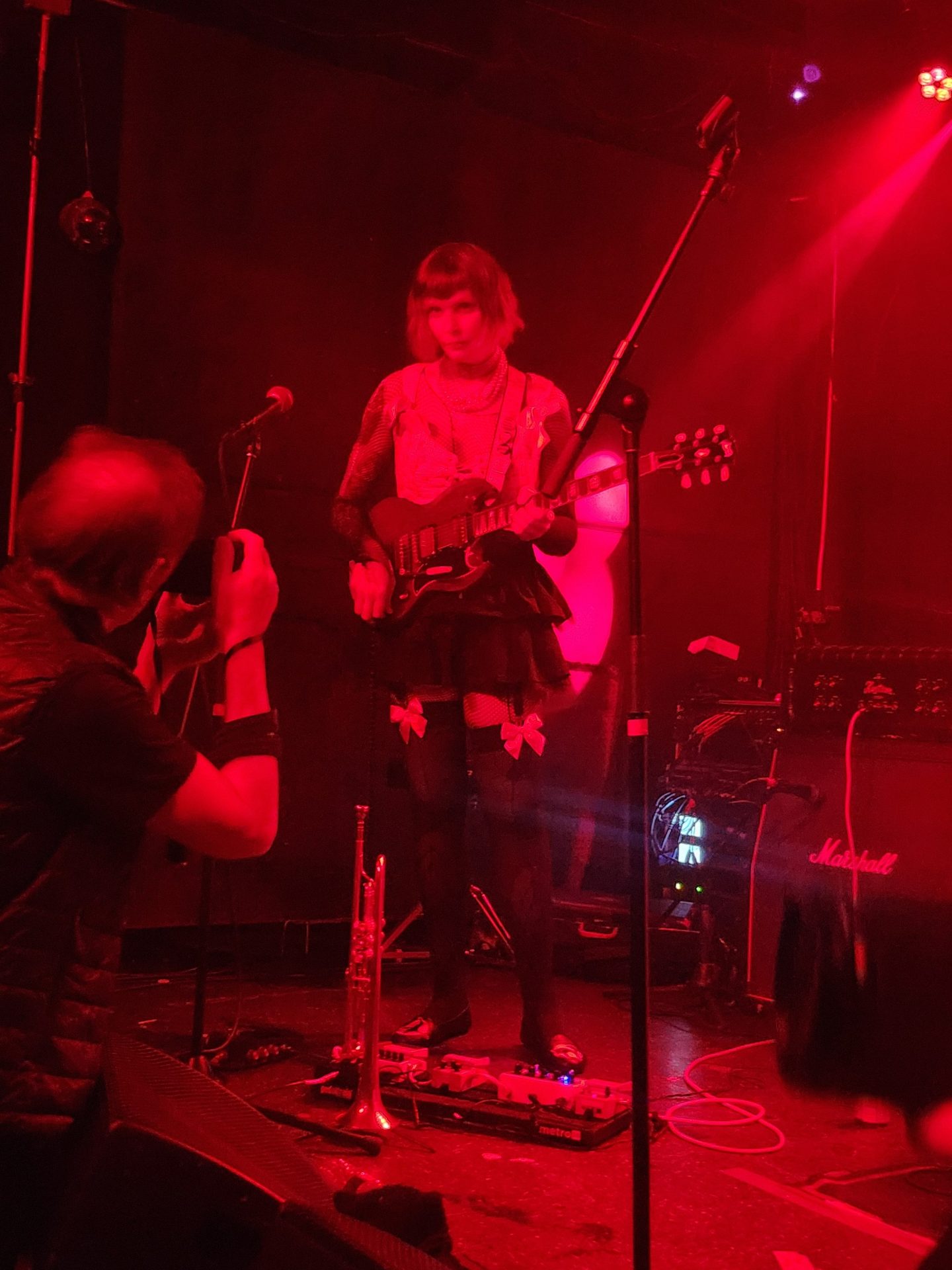
…
I’ve seen PM Press tables at shows before, but never a metal show. When I stopped by to pick up a copy of Black Metal Rainbows one of the editors admitted he was better versed in punk music, though the overlap between the genres was clear from the audience.
The neofolk influences aren’t audible but are visible in the crowd to anyone who was familiar with the wave of acts that permeated through the 00s and 10s. Old indicators like weather-beaten caps and the right type of pins were reminiscent of old crust punk gigs. Audience members talked about old neofolk acts they used to follow, and the mixer for Diva Karr hung a pan lid around their neck, beaten matte through repeated use. The back had the words END ALL SUFFERING written in sharpie.
Diva Karr is from Boston, Massachusetts and besides the sound board has a singer, lead, bass and rhythm guitars along with a drummer. The sound they produced was enormous, roaring, and the members all held the stage with equal strength.
A show with a queer focus re-connected borrowed symbols in metal with their leather origins. The lead singer of Diva Karr roamed around the stage in gauntlets with o-rings rather than nail spikes, literally unchained, and fell to her knees in front of the crowd in supplication.
“We’re going into the studio next month to record our second album. This is the first song off that album and it’s about trans BDSM.” She said, then belted out into fist-shaking screams.
Next was Sunrot, which felt strange when they’re so often billed as the headliner. Formed in 2013 and based in NJ, they are well loved kings of local shows. Most recently they have announced a sophomore LP with members of Thou, out on April 7th through Prosthetic Records. The day before they came to St. Vitus they were on stage at Subterranean Dissonance Fest to play with Liturgy, Horrendous, The Hirs Collective, and more. Sunrot always put on an energizing performance. There was no pit until the singer, Lex Nihil, stepped off the stage and into the audience, then the pit started moving around him. Sunrot not being the headliner means the final song, with the singer on the floor screaming until his voice started to fray, left the venue ringing when it was down. The last notes were as loud as they could be and the audience still crowded around in silence and stillness, cleaning their souls from the inside out. At the end of the set I gave Lex a slap on the back and told him good set while he was mopping sweat off his face.
“Lotta familiar faces tonight.” I mentioned.
“It feels intimate but not full of shitheads.” He agreed.
…
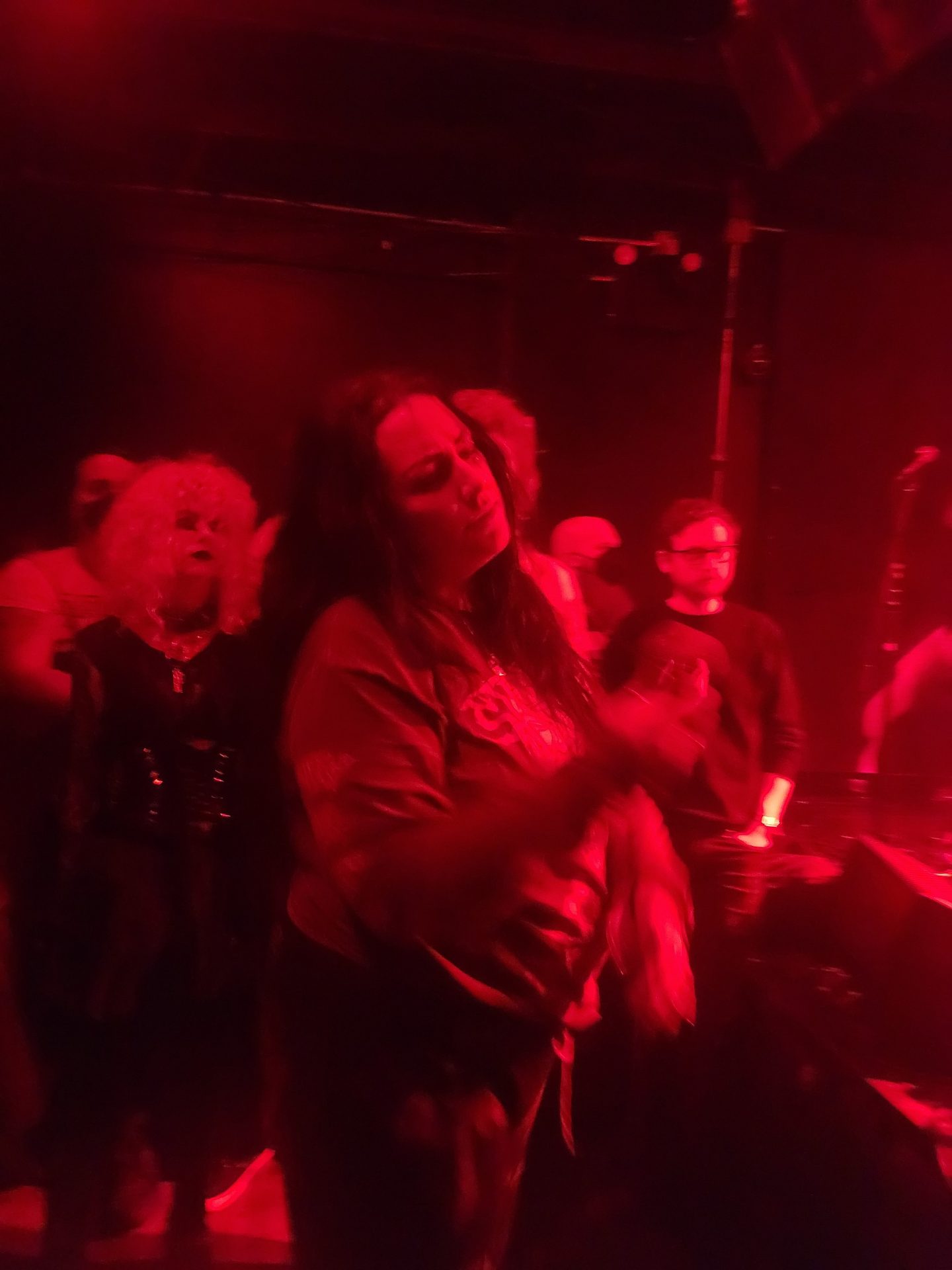
…
The next band was Couch Slut, formed in Brooklyn 2014. The venue was getting packed when the woman who played both trumpet and bass asked if they could lower the lights to a dark, glowing red. The whole room looked like it was steeped in tea as the music started up. The singer Megan Osztrosits was standing in the crowd on the mike, holding onto the stage as if for support. She weaved back and forth, in and out of the crowd while clutching at the sky. They describe their own sound as ‘grimy, blackened noise-rock’ and their sound in a room is like a huge, slow heartbeat. Osztrosits screamed with strangled fury over the steady, even beating of bass and drums, and after beating herself with the mic blood matted her hair and smeared her eyeliner down her cheek. Heard live, Couch Slut sounds like other, similar acts, without any audio production to emphasize interesting musical tricks. The show is good, but the only experimental part of their performance was at the end when the bassist lowered her guitar and instead played a long, haunting melody on the trumpet.
Imperial Triumphant was the centerpiece of the show, an experimental and symphonic act formed in New York in 2005, they were also at the fest with Sunrot the day before and recorded with Thou.
Imperial Triumphant’s tour manager was selling Deco Noir at the merch table, a coffee brand roasted and packaged by friends on the island of Manhattan. The coffee label fit in with Imperial Triumphant’s album and merchandise art, which was made up of art deco skyscraper flourishes in black and gold.
The band was also selling black fabric fans that people started to use near the end of the night to fan themselves as the crowd got thicker and the air hotter.
Imperial Triumphant is made up of tall, statuesque men stepping like gazelles around their sound check. They came on unmasked to test the mics, and once they were happy, left to put on spiked golden masks that made them all look even taller and more spider-like. Normally they wear black robes as well, but the venue was so hot they stuck with just masks and t-shirts.
While the other bands stuck more to the theme of the night and used their music as a means to discuss material conditions, Imperial Triumphant was symphonic. Loud with a wide scope, with a sound that was orchestral. The members switched between vocals, guitar and trumpet with the slow and unconcerned moves you see from people who have been performing for their entire adult lives. The orchestral sound made St. Vitus feel church-like.
…
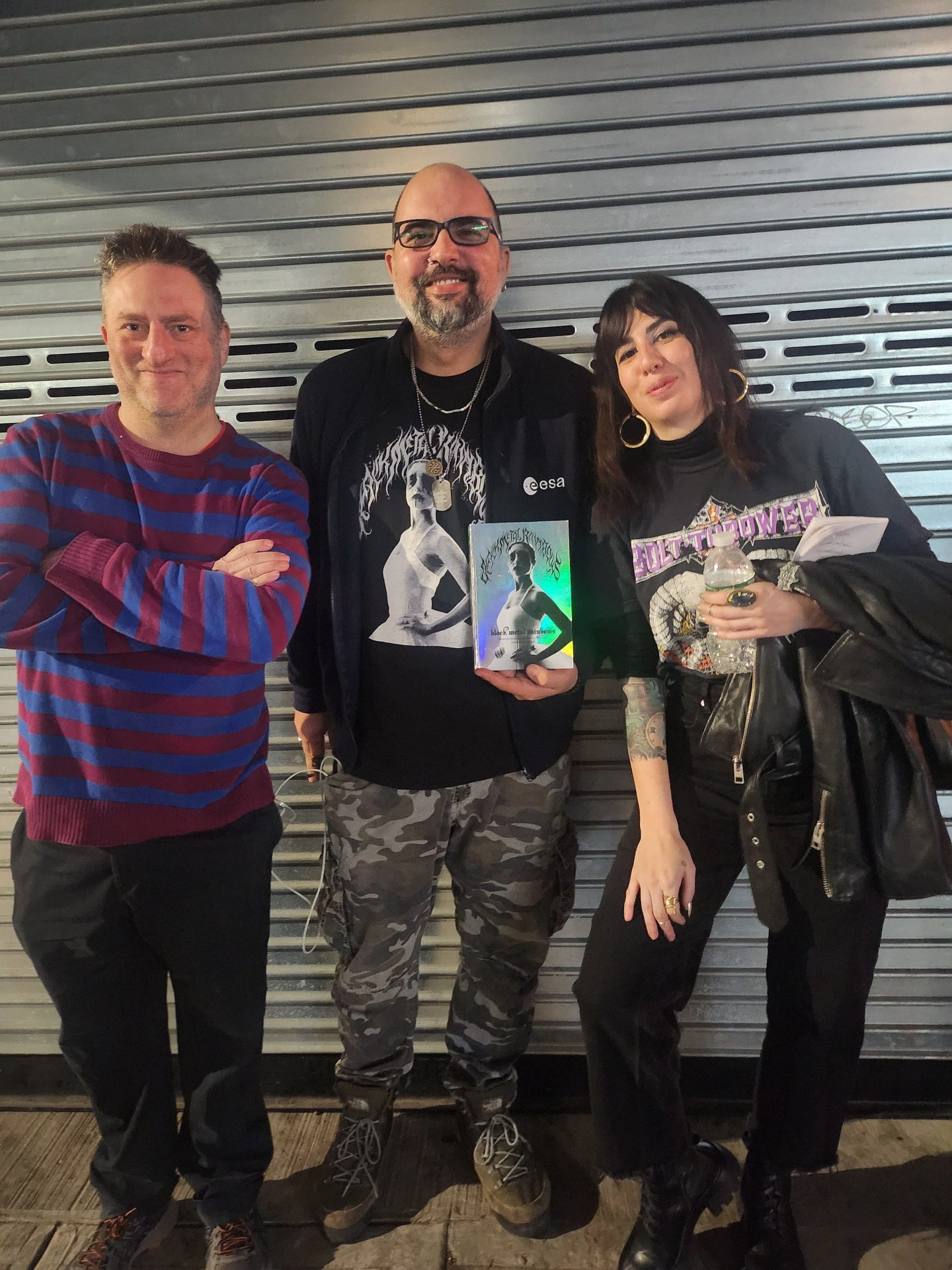
Photo credit: O F Cieri
…
Afterwards the editors of the book got onstage to thank the audience and the musicians for being there. The sense of community in conversation was new to St. Vitus, but the effort to bring that space into a wider dialogue is worth preserving.







